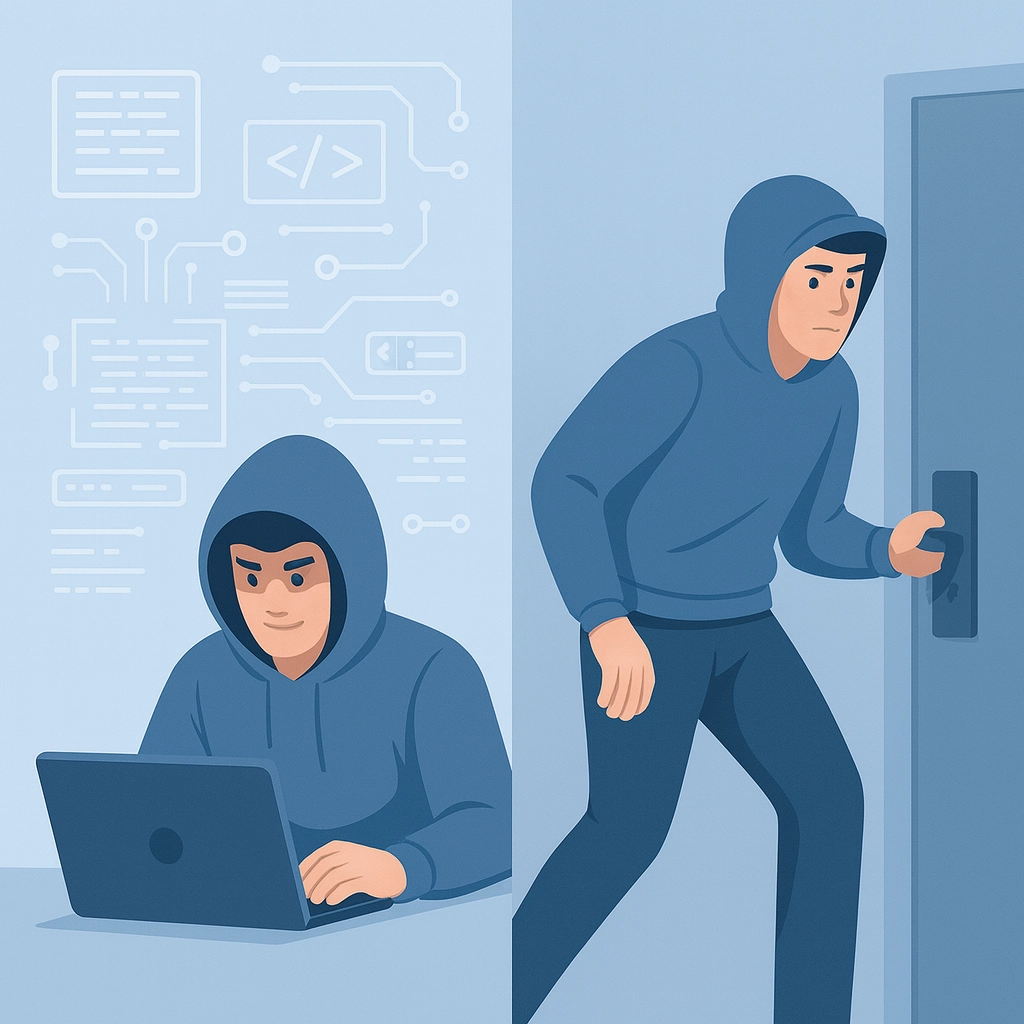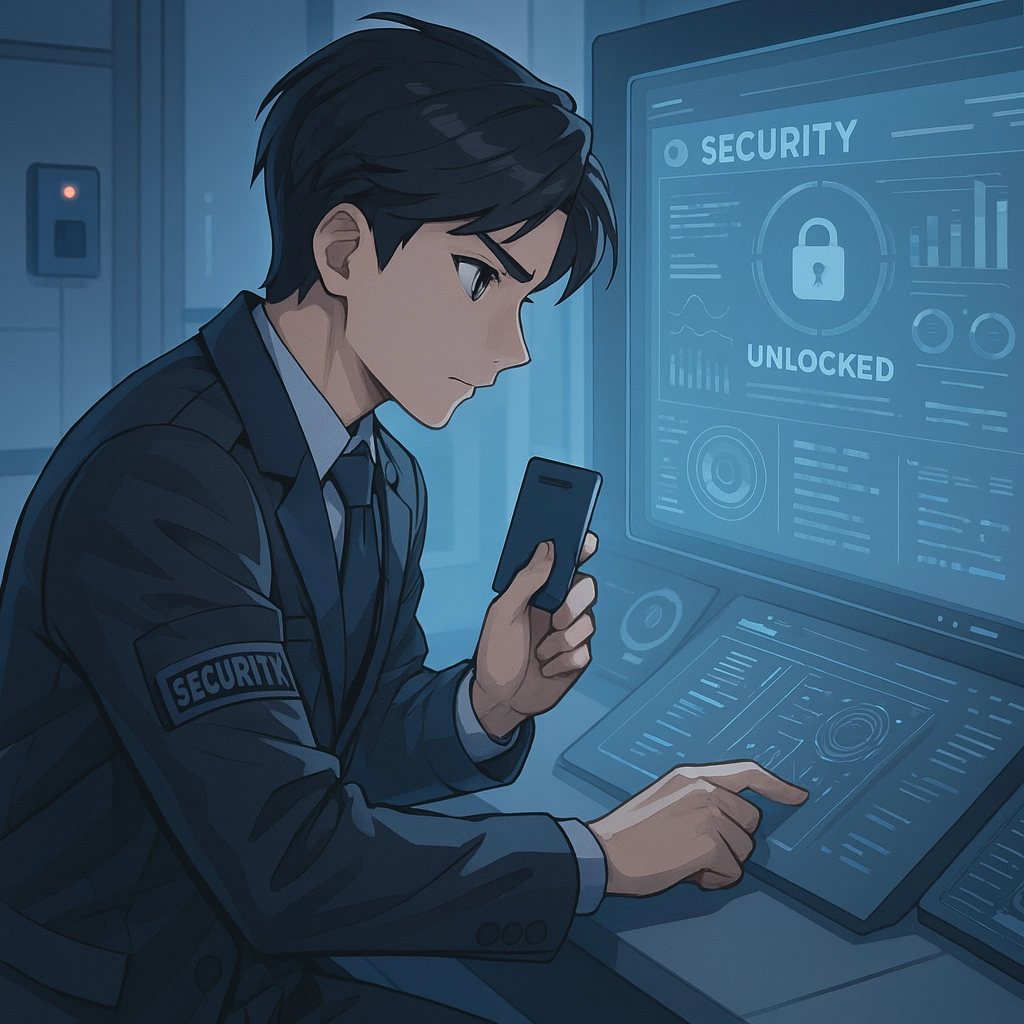Is your office security system quietly rolling out the welcome mat for hackers? This is one of those questions that can keep you up at night—especially when the obvious answer is “no way,” but the reality is a lot more uncomfortable. Security technology’s job is to protect, but time after time we see organizations, big and small, drop their guard in the places that matter most. It’s not about intentional ignorance; it’s the subtle gaps that hackers count on—the cracks in the walls, both digital and physical, that are all too easy to miss unless you look for them.
Hackers Are Playing Chess. Don’t Play Checkers.
When we think “hacker,” too often we picture a hoodie-wearing loner banging away at firewalls from some distant basement. Modern reality? Hacker teams are running multi-step campaigns that blend cyber and real-world tactics with military precision. Their reconnaissance starts with Open-Source Intelligence (OSINT)—publicly available information your company willingly or accidentally shares online.
You’d be shocked at the level of detail hackers can map about your environment before they even float a phishing email or step on site. They comb through HR job postings, marketing videos, even your employees’ LinkedIn profiles for clues about server locations, technology vendors, security policies, and the layout of your building. One wrong post and you’ve put your server room on their treasure map.
But they don’t stop at passive data mining. Physical infiltration is on the rise, and the techniques look disarmingly normal. Social engineering is their keycard—literally. Attackers have posed as maintenance workers or delivery drivers, wearing hi-vis vests and carrying plausible work orders, to talk their way past the front desk. The next thing you know, someone’s got hands on your networking rack, snapping photos or planting rogue devices. 
Security isn’t just for IT. Facility managers, front desk teams, and even cleaning staff are all part of your risk profile. Hackers know this. They build attacks that test every weak point, betting you’ll miss something.
The “Not My Problem” Trap
Here’s the tough pill: Most managers don’t see the signs, not because they aren’t smart, but because the red flags look like everyday background noise. Security logs give you so much data that small signals drown in the static. Unusual logins, odd USB activity, and even the presence of unknown people in supposedly secure spaces get explained away instead of investigated.
Why? Confidence. If you’ve invested in robust firewalls and shiny security cameras, it’s easy to believe you’re covered. But overconfidence leads to blind spots—especially when it comes to the physical layer. Most breach reports trace back to this critical failure: nobody challenged the stranger with the clipboard, nobody questioned the employee walking out with a server, and absolutely nobody thought twice about the legacy keycard system still running on decade-old encryption.
Every year, multi-million-dollar losses stem from these overlooked moments. Stolen credential? Reset the password and move on. Phishing email? Just another Tuesday, right? But these “solved” events are often the foothold that a patient attacker uses, lurking in your systems, gathering intel—or worse, waiting for that one day when everything lines up just right.
The Real Weak Links: More Than Just IT
The truth is, vulnerabilities hide in plain sight. We’re not just talking about zero-day exploits or headline-grabbing ransomware either. The basics trip up even the best teams.
- Unsecured Server Closets: Unlocked doors, missing cameras, anyone with a tool belt can stroll in and drop a rogue device onto your network.
- Keycard and Access Control Cloning: Still using those cheap, legacy keycards? Hackers have handheld devices that can copy hundreds of badges in a lunch hour. Proximity cards are especially vulnerable, and even “secure” smart cards can be compromised if you’re not running the latest encryption.
- Social Media Oversharing: Your staff love sharing at work. But every team photo, every proud “Look at our new server!” post, gives hackers a peek into your infrastructure. Those hallway whiteboards in the background? Goldmine.
- Physical Documents: That stack of onboarding paperwork left in a conference room? It might have everything a bad actor needs to target your systems or your staff.

And yes—sticky notes with passwords under keyboards are still a thing.
OK, So Why Aren’t We Catching This?
Attackers are patient. They watch, listen, and wait for patterns: that security guard who steps out for coffee at 2:45pm every Thursday, the intern who always props the door open. Many attacks don’t need “hacking” in the classic sense at all. They need human error, lack of accountability, or simple habit.
Lack of effective logging and monitoring is a big culprit. In many offices, logs are wide and shallow—they catch the obvious stuff but miss subtle anomalies that point to an advanced cyber campaign. And because attacks blend the digital and the physical, teams rarely share insights across silos.
But let’s get real: the number one reason these signs get missed? Everybody thinks it’s someone else’s job. If security is “what IT handles,” then nobody asks why a janitor was wandering near the MDF closet at 7:30pm on a Saturday. If the front desk is just there for hospitality, it’s easier to let the “delivery guy” through than to make a scene.
Your system invites risk the minute your people start operating on assumptions.
Building a Defense—That Actually Defends
It’s not all doom and gloom. Once you know where to look, you can turn your office into a fortress—and yes, it’s easier than you think.
-
Raise Security Awareness Everywhere: Make digital and physical security part of everyone’s job description. Run regular training that includes social engineering, not just “How to pick a strong password.” Test your people with simulated phishing and unexpected drop-ins.
-
Upgrade The Hardware: If your access system uses obsolete proximity cards, you’re on borrowed time. Move to smartcards with genuinely modern encryption, and check your system’s audit logs for irregular activity. (Not sure where to start? We can help—book a consultation with our security pros.)
-
Lock Down and Log Physical Spaces: Don’t just trust your badge reader; use cameras, alarms, and door sensors, especially around network closets. Review your visitor policies and make it clear: If you don’t recognize someone, challenge them (politely but firmly).
-
Minimize Oversharing: Talk with your HR and marketing teams about what gets posted online. A job post doesn’t need to tell the world exactly what server models you use or the locations of your critical infrastructure.
-
Modernize Your Monitoring: Don’t rely solely on logs that alert after the fact. Invest in threat hunting tools that analyze patterns over time, not just in-the-moment events. Connect the dots between digital anomalies and physical incidents—like a network alert and a propped-open door.

- Physical and Digital Are ONE Problem: Unify your teams. Run tabletop exercises where IT, facilities, and management walk through a hypothetical breach. If you find that nobody knows who to call—or realize you can’t answer “how would we spot this?”—congratulations: you found a vulnerability to fix.
Your Next Step: Don’t Settle for Surface Solutions
What’s true for ICS Technology Group is true for every business: The bad guys don’t sleep, and their creativity is endless. But there’s power in recognizing your office’s real risk profile—not a checklist, but a living, breathing set of habits, routines, and technologies that, together, can either invite danger or close the door in its face.
You don’t need to become paranoid. You just need to pay attention—to the ways your people work, the signage on your doors, the servers humming away in their closets. If even one vulnerable spot is hidden in shadow, hackers will find it. But if you shine a light in every dark corner—physical and digital—you’re already several moves ahead.
Ready to cut through the noise and safeguard your business—properly? Reach out for a free security assessment or consultation at ICS Technology Group, and let’s talk about building defenses that work in the real world. Your risk is real, but so is your ability to control it.


